Monument to the Victims of State Terrorism



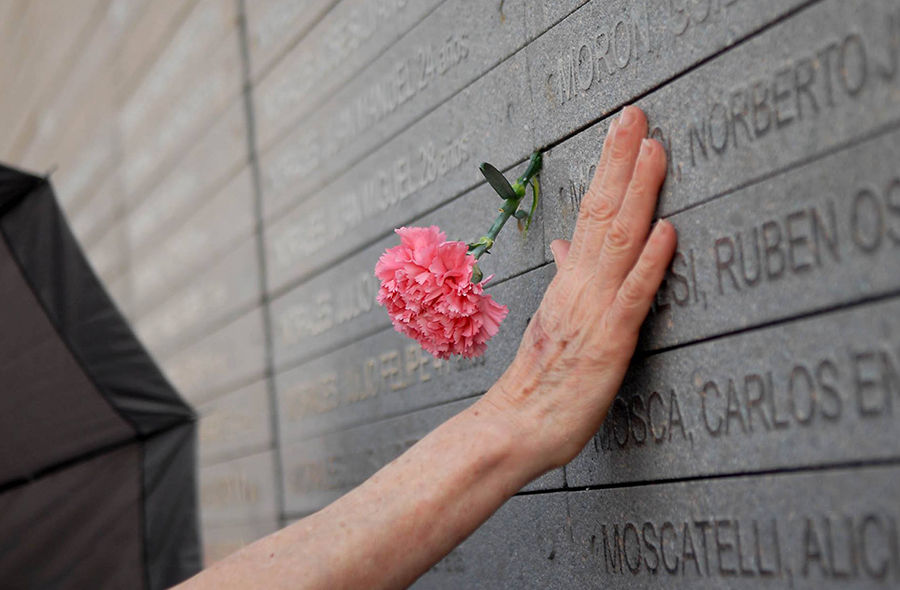
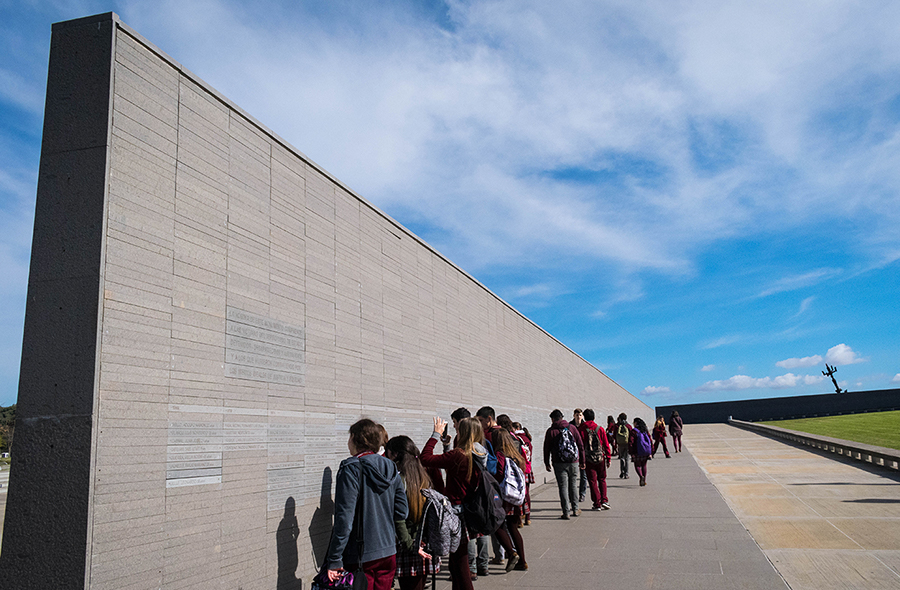
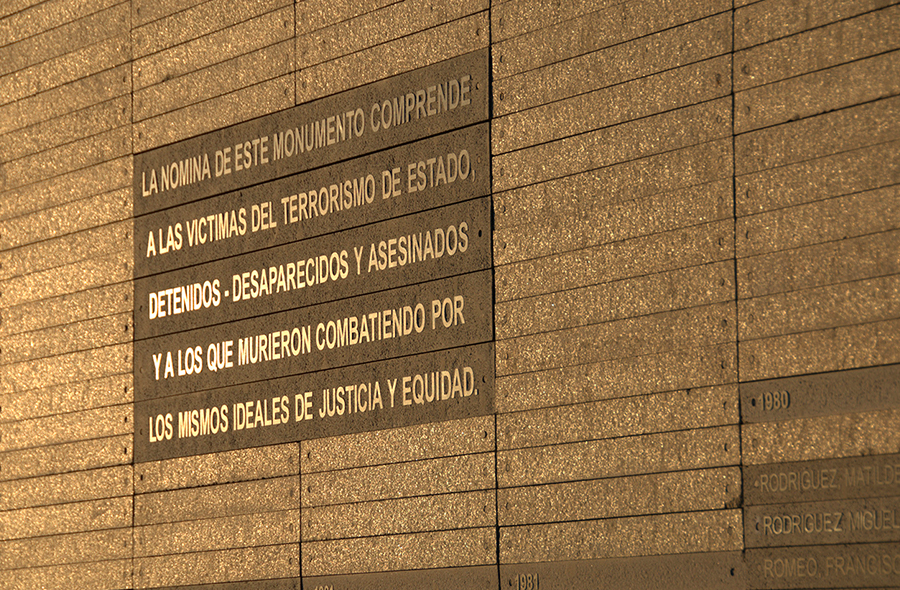
Four stelae, thirty thousand plaques
In the Monument to the Victims of State Terrorism are engraved the names of the persons detained-disappeared and/or murdered by the repression perpetrated by the State during the 1969-1983 period. It is composed of four stelae made of concrete that contain thirty thousand blocks of porphyry stone from the Patagonia, of which about nine thousand are engraved with the names, arranged in alphabetical order and chronologically, according to the year of their disappearance and/or murder; additionally, the victims’ ages are shown and cases of pregnant women are indicated.
The Monument’s list was mainly compiled with the names recorded in the report issued by the National Commission on the Disappearance of Persons (CONADEP) and the names reported subsequently to the competent authorities, such as the Human Rights Secretariat of the National Ministry of Justice and Human Rights and the Judiciary.
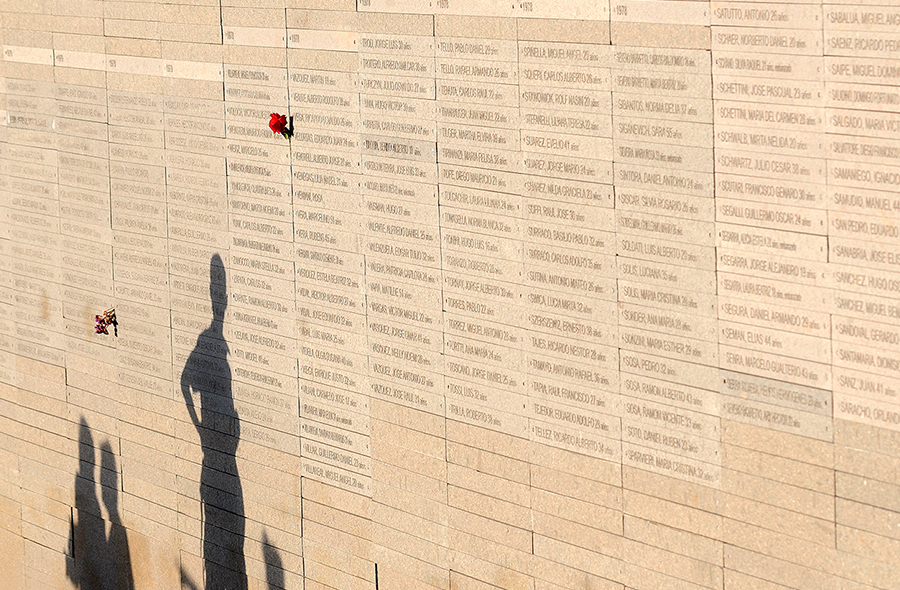
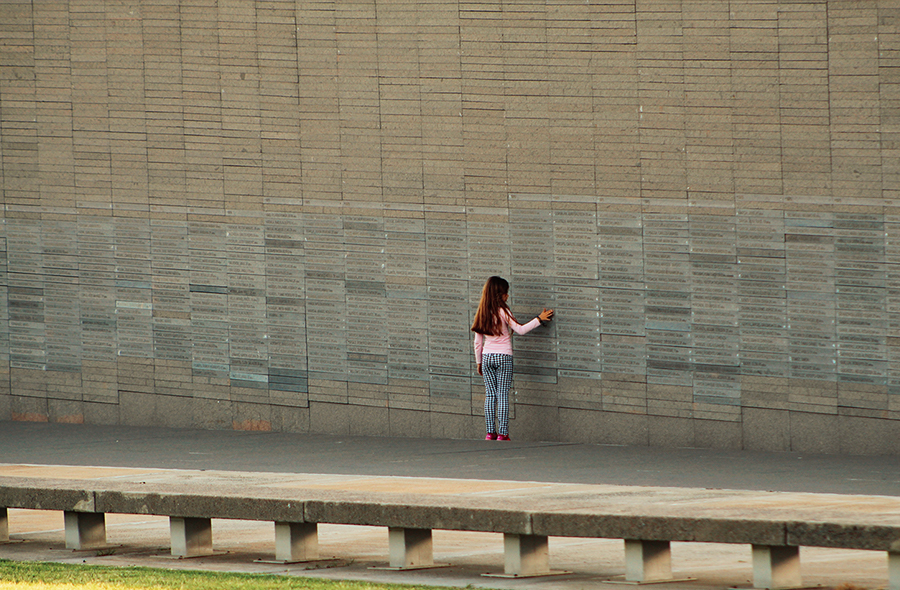
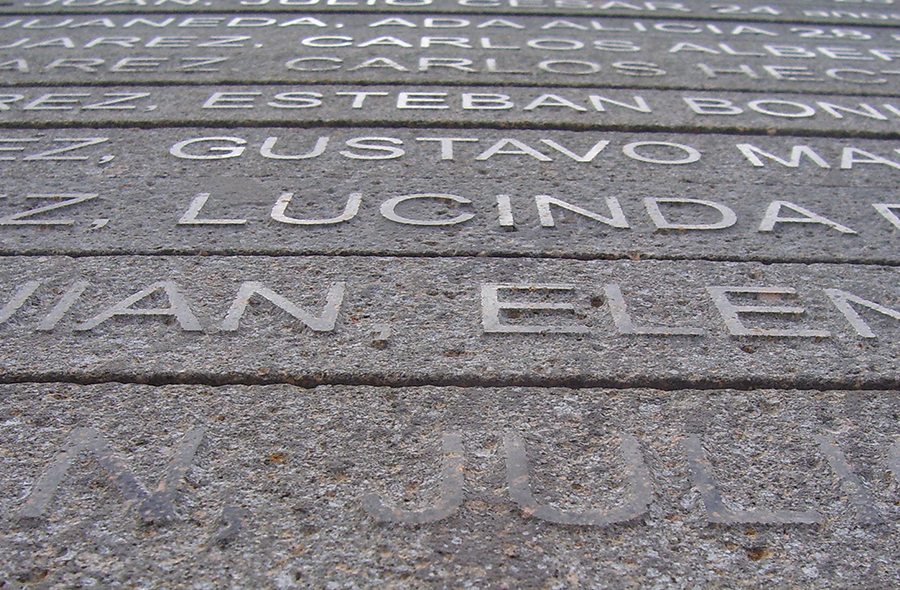



The List
In the Monument to the Victims of State Terrorism are engraved the names of the victims of the repression perpetrated by the State from 1969 until 1983. That period began with the victims murdered during the popular uprisings in Corrientes, Rosario and Córdoba.
The Monument includes the names of the persons murdered during acts of repression perpetrated by the State, such as the Trelew Massacre on August 22, 1972, and by parastatal armed groups, as in the so-called the Ezeiza Massacre, the victims of the repression by the parapolice right-wing organizations (such as the Alianza Anticomunista Argentina, known as “Triple A”), and the victims of the Independence Operation, initiated in Tucumán after the enactment of Decree No. 261 in 1975, which was extended to all the national territory with the enactment of Decrees No. 2770, No. 2771 and No. 2772.
Although the period includes constitutional governments, the state of siege was imposed in November 1974, which meant the suspension of constitutional guarantees throughout the national territory which lasted until the return to democracy on December 10, 1983.
Additionally, the Monument includes the names of Argentine citizens who were victims of the repression in the context of the Condor Plan, repression coordinated among the different military dictatorships of the Southern Cone, as well as those of foreign citizens murdered or who disappeared in Argentina. It also includes the cases of children who were abducted with their parents and died due to the repressive operation. However, it does not include the names of children born during their mother’s captivity, nor of those who have recovered their identity or are still being searched for today.


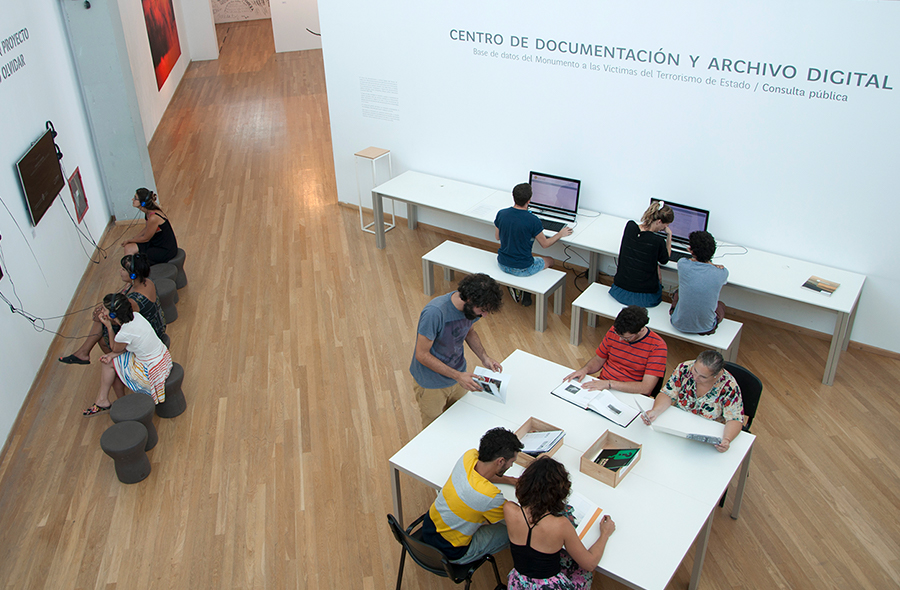
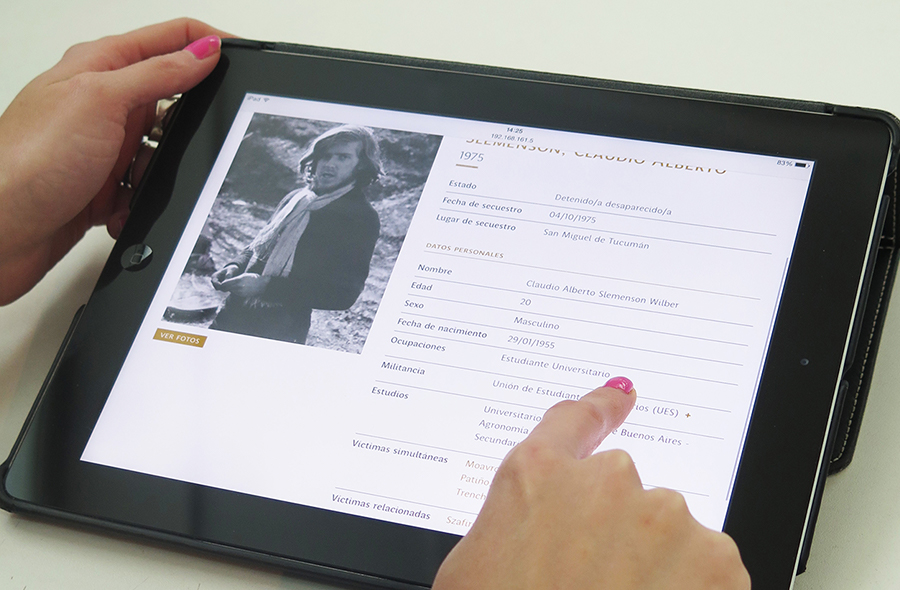
Public Access Database
The database contains information regarding the life and circumstances of disappearance and/or murder of each of the persons whose names are engraved in the Monument. This information is completed with digital documentation, such as photos and newspaper articles.
The Research Team carries out periodic updates based on the information contained in the official lists and the various sources consulted for their formation.
F.A.Q.
The Monument to the Victims of State Terrorism covers the years 1969-1983. Although it covers a democratic period (1973-1976), it is marked by the state of siege since 1974. The Monument begins with the repressions suffered by the popular uprisings in different cities of the country in 1969 (such as the “cordobazo” or the “rosariazo”, during the Onganía dictatorship), and includes various repressive events that occurred in the years prior to the beginning of the last military dictatorship. Examples include the Trelew Massacre (1972), the Ezeiza Massacre (1973), the action of the Triple A (1973/1976) and the Independence Operation (1975).
The main sources consulted for the creation of the Monument’s list and the database are: the archives of the former CONADEP, the Secretariat of Human Rights of the Ministry of Justice and Human Rights of the Nation, and the Argentine Forensic Anthropology Team. These lists were supplemented by the lists drawn up under Act No. 24,321/1994, which created the figure of “absent due to forced disappearance”, and Act No. 24,411/1995, which established economic compensation for the relatives of the victims of repressive action prior to 10 December 1983. It also contains the information provided by the judiciary. Finally, journalistic sources, books, magazines and archives of human rights organizations were consulted.
The Parque de la Memoria does not receive complaints of forced disappearance. Denunciations must be made to the Secretariat of Human Rights, part of the Ministry of Justice and Human Rights of the National Government.
For more information, consult the website of the Secretariat of Human Rights http://www.jus.gob.ar/derechoshumanos
The incorporation of names to the Monument arises from the interweaving and exchange of information that is made from the different sources mentioned above. If cases that are not part of the Area’s records arise from this process, they are incorporated into the database and subsequently into the Monument
The Research Area is responsible for updating the database containing the list of names of the Monument to the Victims of State Terrorism. For that purpose, information is coordinated and exchanged with organizations that work with lists of victims, such as the Secretariat for Human Rights of Argentina, the association Abuelas de Plaza de Mayo and the Argentine Forensic Anthropology Team. Additionally, research is carried out together with other sites of memory.
The Area also works together with the Art and Education areas, promoting the dissemination, diffusion and promotion of memory by preparing contents and materials that are used in the guided tours and educational activities. On the other hand, it is articulated with the artistic productions, so that these are supplemented with the strong symbolic content that the database manages to transmit.
Contact: parquedelamemoria.monumento@gmail.com

